The last update to the I-MAC history was written in mid mid-1998 as we celebrated our 50th anniversary. As usual, we’ll touch briefly on each year but will start with some general remarks and will conclude with a separate discussion of two long-term I-MAC-connected activities that stand out from our everyday activities. These are the Crank Rainier project and local hiking access gains – particularly the purchase of Badger Mt.
Interest in types of activities has changed some. Rock climbing continues, but snow climbing is a rarity in the club now. We do less backpacking, but there is more interest in snowshoeing. After several years of finding a few huckleberries, that annual “hike” (or “pick”) was dropped, but we now have occasional butterfly hikes thanks to Jim Dillman. The annual pool party is a thing of the past, but the mini golf tournament has become an annual event with Mark Hoza winning the first 6 tournaments. We can always count on Olaf (and Patsy) Rasmussen for wonderful video shows of faraway places. We offer a 2 day Wilderness First Aid course taught by the Wilderness Medical Institute every other year. We gained some competition when the Fun, Fit & Over Fifty Club was formed, initially as part of the Richland Recreation Department. An ongoing melodrama has been the Horseshoe Prairie agreement(s) with the snowmobile clubs. In 1998 the Forest Service asked us to represent the interests of cross-country skiers and snow shoers in setting aside Horseshoe Prairie for non-motorized winter activities. Mark Hoza and Jim Langdon acted as our representatives. Over the years a number of boundaries have been set, signs posted (with I-MAC help) and boundaries ignored by snowmobilers who push to yet again revise the boundaries. Fewer young people have joined us in recent years, but 2008 has seen a drive to get families with young children out on hikes.
Returning to 1998, we scheduled a multitude of activities for the big anniversary. Some were reenactments of past events. A number of unusual (for us) social events were held: the tentless pajama party, ice skating, roller skating, and creative homemade pizza. Our big 50th banquet featured a potluck with attendees contributing ingredients for Stone Soup. We finished off the year by publishing a spoof edition of our newsletter – the “Yoohoodler” featuring a lot of great stuff contributed by many club members.
In 1999 Mark Hoza was president and a lot of club members left town (no, I don’t think there is a connection). Mark Halverson and Edee Edwards moved to Boston, Anne Hernandez moved to Tennessee and Carol Davis moved to Istanbul, Turkey. They all claimed it was for jobs. Carol, at least, eventually came back. We also had a number of weddings that year: Skip and Linda Claeson, Steve & Jody Baum & (finally members) Sharon & Kip McDowell. Larry & Teddy Upson moved to Portland ending a long string of weekends hiking in the gorge with an overnight stay at their Underwood home. Bill Gurwell continued a backpacking marathon and gave occasional talks on ultra light weight backpacking. Roger & Claudette Stephens completed their last section of the Pacific Crest Trail. Claudette became the first I-MAC female to hike the entire PCT.
In 2000 we lost 2 long time I-MAC members: Helen Rasmussen (to cancer) and our founding father – Larry Upson. George Meriwether was president. Rusty (the Ranger) Thompson who has directed our annual trail maintenance work parties for many years was the speaker at our annual banquet.
In 2001 Bill Gurwell and Carol Davis marry. Carol’s State Department job had her move to Caracas, Venezuela after some time in D.C. Bill spent much of his summer back packing the Appalachian Trail before moving to Venezuela. This year the Yodeler became available electronically. Jim Langdon was president and was also elected to be an honorary member.
2002 started with a change to our traditional New Year’s Day hike. Having been denied permission to hike Badger, we hiked up Red Mt. instead. Steve Wisness was president and Pete Reike became an honorary member.
In 2003 & 2004 Skip Claeson was president. I-MAC jumped into hiking access mode big time with Badger Mt. getting most of the attention. Bill Gurwell sent in reports of his on going back packing along the Appalachian Trail.
Jan Francini had been elected president for 2005, but she & husband Bob had to move for his job before she could take over that office. Vice President George Hunt took over the reins. Speaking of reigns, after 6 years of winning the mini golf tournament, Mark Hoza was finally dethroned by Jim Langdon. Club secretary Jeremy Michelson & membership chair Debbie Roles got married and Marilyn Young became an honorary member.
George Hunt continued as president in 2006. The club learned that Ang Dorjee Sherpa, one of the best known of Nepal’s Everest guides, is married to a PNNL employee and is a Richland resident. He was the guest speaker for our annual banquet. Brad & Desi Benton moved to Portland for his job. We gained an honorary member in the fall when Mark Hoza was elected and lost another one a short time later when Kit Hunt died.
Randy Smith was president in 2007. We had yet another going away party when Mark Hoza and Cheryl Eiholzer moved to Bozeman after retiring from their jobs. Another long time tradition ended when we moved our annual meeting to the Richland Community Center. We no longer have any members living in the Timbers apts. to host the annual meeting for us there. In the fall 8 I-MAC members and 4 others took an 18 day trek to Mt. Everest’s base camp. Ang Dorjee was their guide assisted by members of his family in Nepal.
George Hunt is president again as we enter our 60th year. With the departure of Mark & Cheryl, Sherry Antoniak takes over the traditional Cinco de Mayo party. Our annual banquet featured a video presentation of the Nepal trek of “07. 2008 is still under way – stay tuned.
Now we look back to two activities with strong I-MAC ties – but not exclusively ours. We will start with Crank Rainier.
Pete Reike was an active I-MAC and an avid climber when he was injured in a climbing accident in 1994. He became a paraplegic and battled a series of infections. Regaining health, he was determined to return to climbing and, with a friend, designed and built a “sno-pod” – a snow mobile like device which was powered by hand cranking. After many practice runs, a support team was formed and Pete, his wife Wreatha and their party successfully climbed Mt. Hood in 1998. Later that year they attempted to climb Mt. Rainier but were forced to turn back under nasty conditions which caused nearby parties to require rescue. Another attempt was made in ’99 but soft snow prevented their attaining the summit. Finally in 2000 Pete attained the summit of Mt. Rainier. I-MAC members helped the project financially and many of the support team – both climbing and back at camp – were I-MAC members. Pete’s success was featured on TV’s Dateline NBC in 2001. Pete’s push to summit Rainier was not just for him. He envisioned helping other paraplegics get out into the wilderness. He & his team designed a trail pod as well as the sno-pod. He later led a party with 2 other paraplegics also using sno-pods on a successful climb of Mt. Shasta. Pete was our featured banquet speaker twice and became an honorary member in 2002.
Badger Mt. is another success. I-MAC’s history with Badger goes back to the earliest days of the club. There were several early hikes up Badger including a moonlight hike. It was in 1954 that the tradition of climbing Badger on New Years Day began. For a number of years, people would take thermometers to record the temperature in the fumarole vent at the side of the road near the top. In later years they took garbage bags and hauled out trash. Over the years I-MAC checked in with the owners of the mountain for permission to hike and it was always verbally granted. No one envisioned the need for formal permission. As time marched on, both homes and agricultural development moved closer to Badger. Eventually “No Trespassing” signs went up on part of the mountain. The I-MAC board started discussions on how to preserve local hiking access and did some preliminary research on various boundaries, laws etc. In 2002 we hiked up Red Mt on New Years Day having lost access to Badger. On New Year’s Day 2003 we were harassed by a near by resident when we again hiked Red Mt. At the chili feed immediately following that hike preliminary plans were made to regain access to Badger and assure continued access on Red. A hiking access committee was soon formed. A short time later the Kennewick Irrigation District closed the portion of the Red Mt. trail which crossed their land. Brad Benton succeed in getting formal agreements with both the KID and BPA (which owns another section of Red Mt.) to allow public hiking there. Other portions of Red Mt. are privately owned. There are currently plans for expanded vineyards on Red Mt. with hiking trails included.
I-MAC learned that Sheldon Shore, the owner of most of Badger Mt., was interested in selling the mountain. The hiking access committee started talking to Richland City officials and others about purchasing the mountain. It was learned that some money for such a purchase was available, but a great deal of additional money would have to be raised privately. It became clear that this could not be done within the I-MAC organization because our tax status does not allow fund raising. The group, headed by Mark Hoza & Sharon Grant, which was working on buying Badger, started calling themselves Friends of Badger. They partnered with the local Audubon Society chapter, which had the needed tax status, for fund raising purposes. They also made connections with the Trust for Public Lands, a non-profit organization with lots of experience in obtaining land to be turned over to public use. Many I-MAC members contributed money for the purchase and as a club, I-MAC financed Friends of Badger’s expenses initially. Friends of Badger are now a separate organization able to raise funds on their own. The money raising and lobbying efforts were successful. Badger Mt. was purchased in 2005 and turned over to Benton County as a park. The city of Richland, which owned land at the base of Badger on the north side, soon started developing Trailhead Park which gave us an access point and eventual parking at that side of the mountain. In the fall of 2005 we started building the first formal trail (the Canyon trail – for hikers only) up Badger. The Washington Trails Association helped lay out the trail and supervised the first weekend of work. Eighty six people showed up on Saturday to work on the trail and 45 to 50 returned Sunday. This large turnout amazed WTA officials who supervise trail building/maintenance projects all the time. Jim Langdon became the official trail master for Badger. In 2006 a second trail (the Skyline Trail) and a small parking lot were built on the west side. This trail is longer and is open to hikers, mountain bikers and horses. There have been numerous work parties to build and improve both trails. REI has generously provided grants to pay for gravel and equipment. Boy Scout projects have enhanced the trails and the local wild flower organization has contributed to development of the park. Both trails get a great deal of use.
Because there are now several organizations working locally on wild area preservation, the Open Space Coalition was formed in 2007 to coordinate local efforts. I-MAC, Friends of Badger, the Tapteal Greenway Association and the Audubon Society are among the members. As of this writing, a 2 month push is under way to raise one million dollars to buy a portion of Little Badger.
We never envisioned starting and being a part of something of this magnitude 10 years ago. Who knows what the next 10 years will bring – but grab your 10 essentials and let’s go!
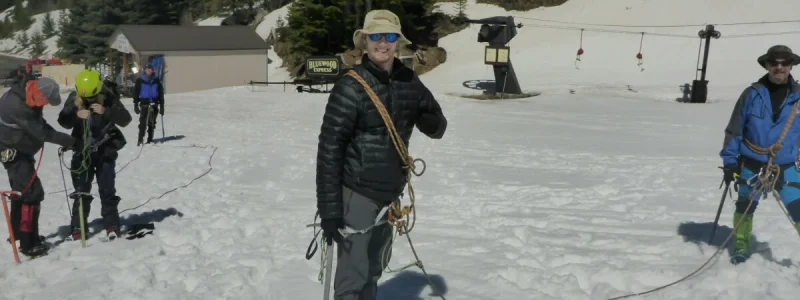

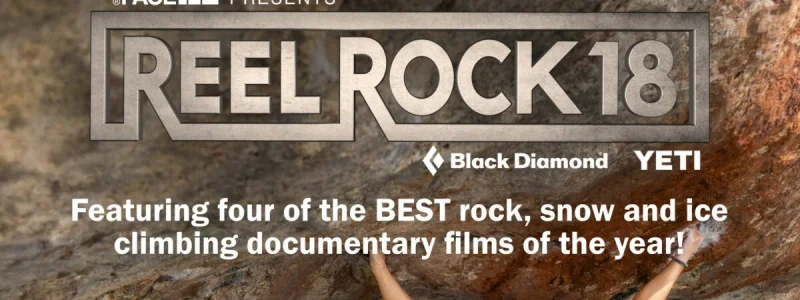
I-MAC enjoys providing the community with opportunities to come together with other outdoor enthusiasts to learn and share. The Reel Rock Film Fest is one such event. This annual event showcases a set of spectacular films about rock climbing (Think Free Solo, only shorter). REI and local climbing clubs toss prizes into the crowd during the intermissions. Proceeds from the event go to worthy organizations selected by the I-MAC Board.
We also host guest speakers from outside the area to provide presentations on mountain climbs, ski tours, hiking and other backcountry adventures. I-MAC members also provide presentations on a variety of topics from epic club hikes to conservation.
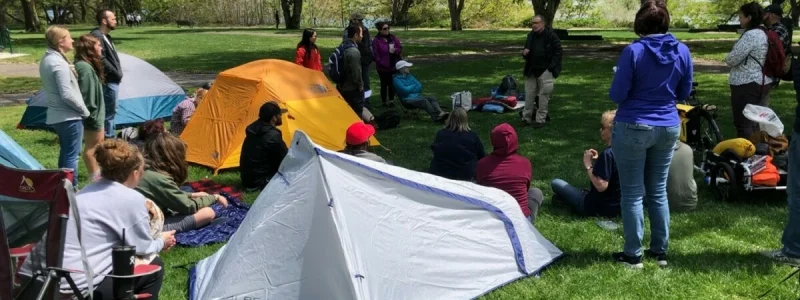
Are you interested in learning how to backpack? If yes, then the I-MAC Backpacking School is for you. This free two-day class is offered nearly every year. A combination of indoor and outdoor classes teaches you what you need to know to start backpacking on your own.
The purpose of the backpacking school is to prepare participants for comfortable and safe multi-day backpacking trips. No prior experience in the outdoors is required. Each topic is taught by an I-MAC member with years of experience.
Topics include:
· The ten essentials
· Training for a backpacking trip
· Gear (e.g., tents, sleep systems, water filters, stoves, backpacks)
· Nutrition and cooking
· Water purification
· Route planning
· Navigation including map & compass and digital navigation
The first day consists of lecture-style presentations. The second day includes outdoor field demonstrations of equipment and techniques at a local park. The school culminates in overnight backpacking trips led by I-MAC trip leaders.
Before the course, we recommend you get the book The Backpacker’s Field Manual, by Rick Curtis, and read as much as you can (it is not available through REI). We also recommend that you join I-MAC before the school. Membership will get you access to more information about our trips, both before and after, and about our community.
The school is free and open to the public.
Registration is required.
For inquires, please email to backpacking@imacnw.org.
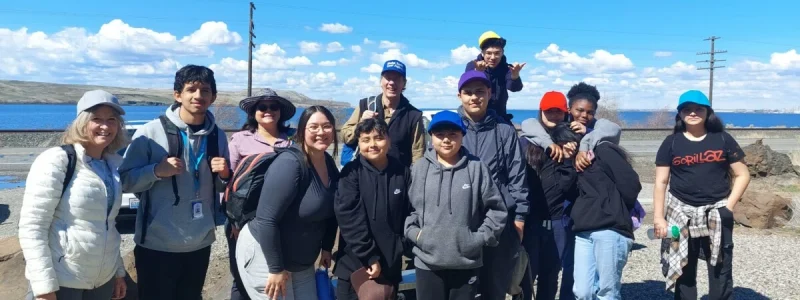
I-MAC partners with local community organizations to teach youth outdoor skills and provide outdoor experiences, such as hiking. I-MAC has partnered with Boys and Girls Club of Benton and Franklin Countries as well as Girls Scouts of Eastern Washington & Northern Idaho.
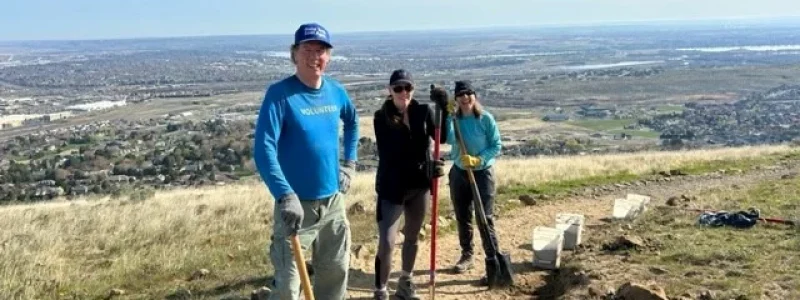
I-MAC focuses most of their trail work volunteer time on local trails, specifically Badger and Candy Mountains. These trails are used by 300,000 people every year. The trail work is led by I-MAC’s Jim Langdon, who is the FRIENDS OF BADGER MOUNTAIN TRAILMASTER.
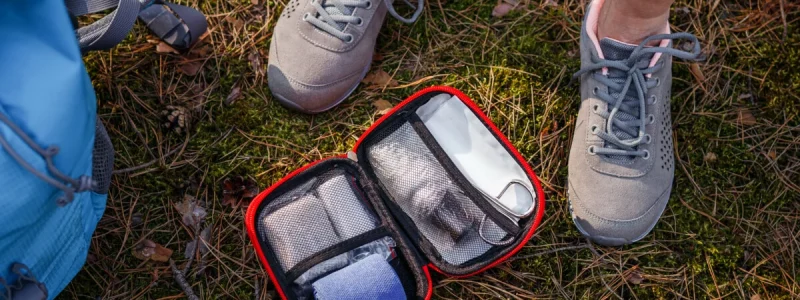
I-MAC hosts Wilderness First Aid classes, provided by outside agencies, on a semi-regular basis. The most recent class was presented by Longleaf Wilderness Medicine and was held at Columbia Basin College, using both indoor and outdoor spaces. Instruction includes both lecture and hands-on practice. Classes are open to the public and I-MAC members can register before the public.
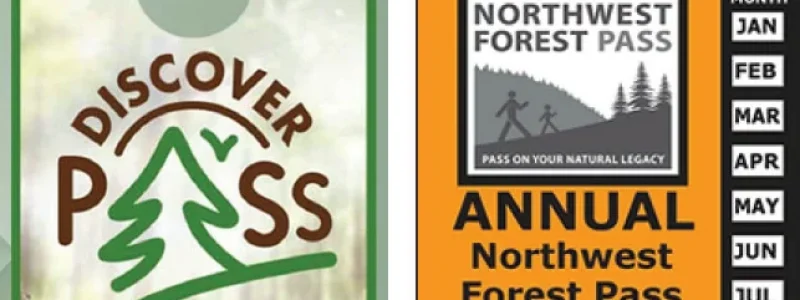
Trip participants are expected to pay drivers a fee to help cover the cost of fuel and vehicle usage. The per milage rate is occasionally adjusted to reflect the general cost of fuel. We want drivers to feel comfortable that their costs are covered, but we would also never want the cost of carpooling to prevent someone from going on a trip. We aim to keep the rate at an acceptable compromise for everyone.
The current mileage rate of $0.12 per mile was voted on by the I-MAC board in April 2023.
On the first day of the trip, be prepared to pay your driver in cash for the amount noted in the trip cost section of the trip description. Checks are not accepted. Some drivers may accept Venmo or other cash apps. Check with the driver prior to the trip if you would like to pay with a cash app.
PASSES FOR PUBLIC LANDS
We are fortunate to have easy access to city, county, state, and federal public lands. Some of these parks and forest are free while other charge fees. Depending on who manages the land, the required fee or pass is different. Below is information about the three primary passes you’ll need to enjoy federal and state public lands in the Pacific Northwest.
Annual Washington State Parks Discover Pass
Discover Pass is a permit that gives you access to state parks and recreation lands in Washington.
Annual Northwest Forest Pass
The Annual Northwest Forest Pass is honored at all US Forest Service operated recreation sites in Washington and Oregon where a day use fee is required.
America the Beautiful Federal Recreation Lands Passes
There are several different America the Beautiful passes to choose from depending on certain criteria. All the passes cover entrance fees at national parks and national wildlife refuges as well as standard amenity fees (day use fees) at national forests and grasslands, and at lands managed by the Bureau of Land Management, Bureau of Reclamation and US Army Corps of Engineers.
Locally, many of these passes can be purchased at REI. All of the America the Beautiful passes are available at the McNary National Wildlife Refuge office at 64 Maple Street in Burbank. All above-listed passes are also available for purchase online.
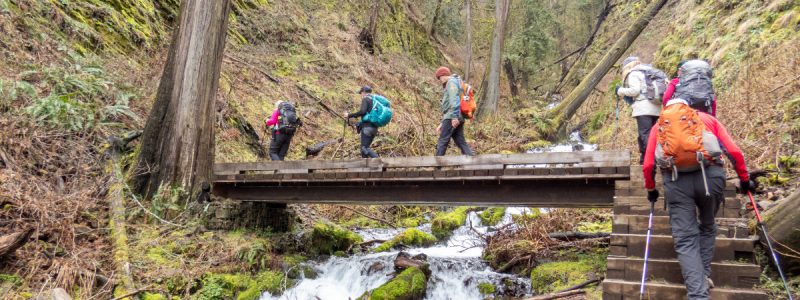
1 – Easy
Less than 6 miles and less than 1,000-ft elevation gain per day
2 – Moderate
6 to 10 miles or 1,000 to 2,000-ft elevation gain per day.
3 – Strenuous
10 to 12 miles or 2,000 to 3,000-ft elevation gain per day
4 – Very Strenuous
More than 12 miles or more than 3,000-ft elevation per day.
0 – Class
No experience needed. This is a training class.
1 – Easy
Minimum experience needed, ample opportunity for instruction.
2 – Moderate
Moderate experience needed, still a good opportunity for instruction.
3 – Strenuous
Advanced levels of experience needed, little opportunity for instruction.
4 – Very Strenuous
Must be entirely self-sufficient, no instruction provided.
0 – Class
No skills needed. This is a training class.
1 – Easy
Less than 5 miles and less than 500 ft elevation gain.
2 – Moderate
5 to 8 miles or 500 ft to 1,500 ft elevation gain.
3 – Strenuous
More than 8 miles or more than 1,500 ft elevation gain.
4 – Very Strenuous
Usually requires great effort, could include overnight outings requiring full packs.
0 – Class
No skills needed. This is a training class.
1 – Easy
Less than 6 miles and less than 500 ft elevation gain. Minimal stopping and turning skills necessary.
2 – Moderate
6 to 11 miles or 500 feet to 1,500 ft elevation gain. Stopping and turning skills are important.
3 – Strenuous
More than 11 miles, or greater than 1,500 ft elevation gain. Stopping and turning skills a must.
4 – Very Strenuous
Usually requires great effort and advanced skills. This could include overnight outings requiring full packs.
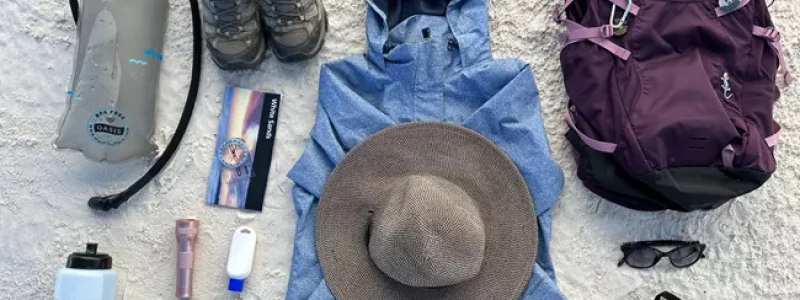

Check out the I-MAC ACTIVITY CALENDAR for upcoming trips. If you are interested in joining an I-MAC adventure, review the ACTIVITY CLASSIFICATION and TRIP COSTS & PASSES pages before you sign up to ensure the trip is right for you.
Each participant is responsible for their own safety and being prepared. Planning and preparation start with the 10 ESSENTIALS and staying up-to-date on road and trail conditions, permit requirements, party size limits, snowpack, wildfires, and weather.

Each participant is responsible for their own safety and being prepared. Planning and preparation start with the 10 ESSENTIALS and staying up-to-date on road and trail conditions, permit requirements, party size limits, snowpack, wildfires, and weather.
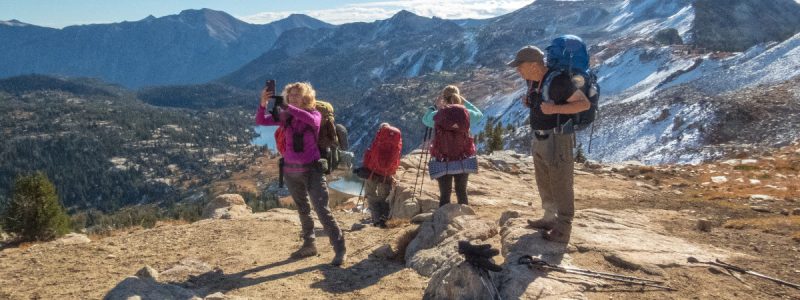
Are you looking to extend your outdoor adventure beyond day hikes? Backpacking is similar to hiking except that you bring all your gear with you including food, clothing, sleeping pad and bag, tent, and other personal items. Backpacking requires physical conditioning to ensure you have the stamina to carry the extra weight and be on the move for multiple days in a row. It is also important to have knowledge of map reading, Leave No Trace Principles, and and basic outdoor skills.
I-MAC members lead backpacking trips from easy overnight trips to challenging multi-day adventures even in the winter! Backpacking is a wonderful way to explore hard to reach locations and get off grid for a while.
I-IMAC offers a backpacking school once a year, which is a combination of indoor and outdoor classes designed to teach you what you need to know to get started on your own backpacking adventure. About once a year, I-MAC sponsors a Wilderness First Aid Class for members. The information learned in these classes can help save a life when out in the backcountry.
Check out the I-MAC activity calendar for upcoming trips. If you are interested in joining an I-MAC adventure, review the Activity Classification and Trip Costs & Passes pages before you sign up to ensure the trip is right for you.
Each participant is responsible for their own safety and being prepared. Planning and preparation start with the 10 essentials and staying up-to-date on road and trail conditions, permit requirements, party size limits, snowpack, wildfires, and weather.
Learn More